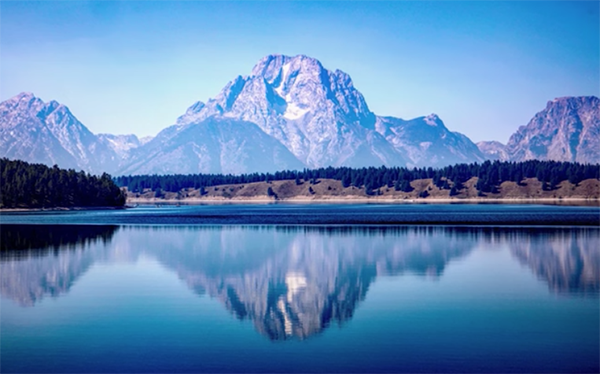‘My only regret is that I didn’t get it sooner’ — I tried out the £25 Dunelm buy with rave reviews to help me sleep at the height of hay fever season
I always thought they were just for kids
 REAL ESTATE
REAL ESTATE
 REAL ESTATE
REAL ESTATE
 REAL ESTATE
REAL ESTATE
 REAL ESTATE
REAL ESTATE
 REAL ESTATE
REAL ESTATE
 EVENT
EVENT
 LANDSCAPE
LANDSCAPE
 LANDSCAPE
LANDSCAPE
 CONCERT
CONCERT
 LANDSCAPE
LANDSCAPE
 TRAVEL
TRAVEL

REAL ESTATE
Residential, Commercial, Interiors

LANDSCAPE
Landmarks, Cityscape, Urban, Architectural

FOOD
Hotels, Restaurants, Advertising, Editorial

PORTRAIT
Traditional, Glamour, Lifestyle, Candid

PRODUCT
Studio, Lifestyle, Grouping

EVENT
Conference, Exhibition, Corporate

FASHION
Portrait, Catalog, Editorial, Street

TRAVEL
Landscape, Cityscape, Documentary

SPORT
Basketball, Football, Golf

CONCERT

STILL

STREET
Adobe recently gave Lightroom Mobile a significant update with powerful features for processing portrait photographs on your phone. A couple of these enhancements can also be used to improve other types of images as well.
According to instructor Terry Lee White, “these updates are game-changers and I’m excited to walk you through the latest features.” Unlike Adobe’s new Photoshop for iPhone, the new Lightroom Mobile tricks are now available for both iOS and Android users.
White explains everything you need to know in barely five minutes, including individual retouching for multiple people in a photo, Smarter Quick Actions with zoomed-in facial editing, and collaborative photo albums with “Anyone-Can-Add” sharing.

This Lightroom Mobile update also boasts a redesigned user experience that includes QR code generation, along with a new “Add Border” tool for Samsung and other Android phones. White is a professional photographer who says, “I love using Lightroom on my phone, I do so almost daily, I’m happy when Adobe adds new things for portrait photographers, and this version does exactly that.”
White’s first example involves retouching an engaging image of two sisters shot against a plain white background with one side of a vivid red chair or sofa peaking into the left side of the frame. He begins by tapping on the Quick Actions button at the bottom of the screen that offers suggestions for the image at hand.
This Quick Actions feature was introduced a couple versions back, but here’s what’s new and extremely useful: “Instead of applying the same adjustment to everyone in a photo, you can now specify which person gets which part of the retouching.” You can still choose “all,” but if you tap on one person Lightroom Mobile zooms in on that subject’s face and identifies all of the enhancements that are available.

“So maybe only one person is smiling and showing her teeth and the other subject has her mouth closed.” The same goes for hair, eyes, and other elements that you may want to edit on one subject or the other for consistency. And making these types of changes is far easier that you would expect.
The foregoing is just one of several new capabilities that White explores, so dive right in and learn how Lightroom Mobile now makes editing and sharing photos easier and smarter than ever before. Then head over to White’s instructional YouTube channel where’s much more to learn about all kinds of photography.
And be sure not to miss a tutorial we featured with another accomplished mobile photographer recently who demonstrates how easy it is to use Adobe’s new Photoshop for iPhone to adjust and enhance mobile photographs on the go.
Have you wondered why some of your photographs are crisp, clean, and full of detail, while others are grainy, dull, and unimpressive? The following tutorial with instructor Anthony Crothers takes an educated guess that “it’s not your camera—it’s your ISO.” And this can be super simple to fix once you understand this essential concept.
British pro Crothers has 25 years of experience with a commitment to help beginner and immediate photographers boost confidence and improve their skills. Here’s his promise for today’s eye-opening episode: “I’ll show you exactly how ISO works, when to raise or lower it, and how to avoid the most common ISO mistakes that ruin photos.” And he does all this in very simple terms over the next seven minutes.

Crothers begins with an overview of ISO and why it matters under a wide variety of situations whether you’re shooting at night, outdoors in bright sun, or struggling with dimly-lit interiors. As you see, there’s more to it than determining a correct exposure, because the setting you choose can also imbue your results with a number of creative attention-grabbing effects.
There’s also a simple ISO test you can conduct try at, along with an interesting “campfire analogy” to help you remember the details forever. Crothers illustrates his tips with real-world examples for landscapes, portraits, urban scenes, nature photos, and other images shot outdoors with varying levels of illumination.
Crothers notes that all photographers make mistakes on occasion and he reveals the most common errors to avoid so that you’re never guilty of making the mistake twice. He also relates a personal story from a wedding “I’ll never forget” and provides a bonus ISO tip at the end of the lesson to help you determine exactly how high you can go.

There’s plenty more to learn by visiting Crothers’ popular YouTube channel and perusing his many how-to shooting and editing videos.
We also recommend watching a tutorial we featured recently with a German pro who demonstrates how easy it is to employ the concept of “hyperfocal distance” to capture sharp photographs with maximum depth of field.
